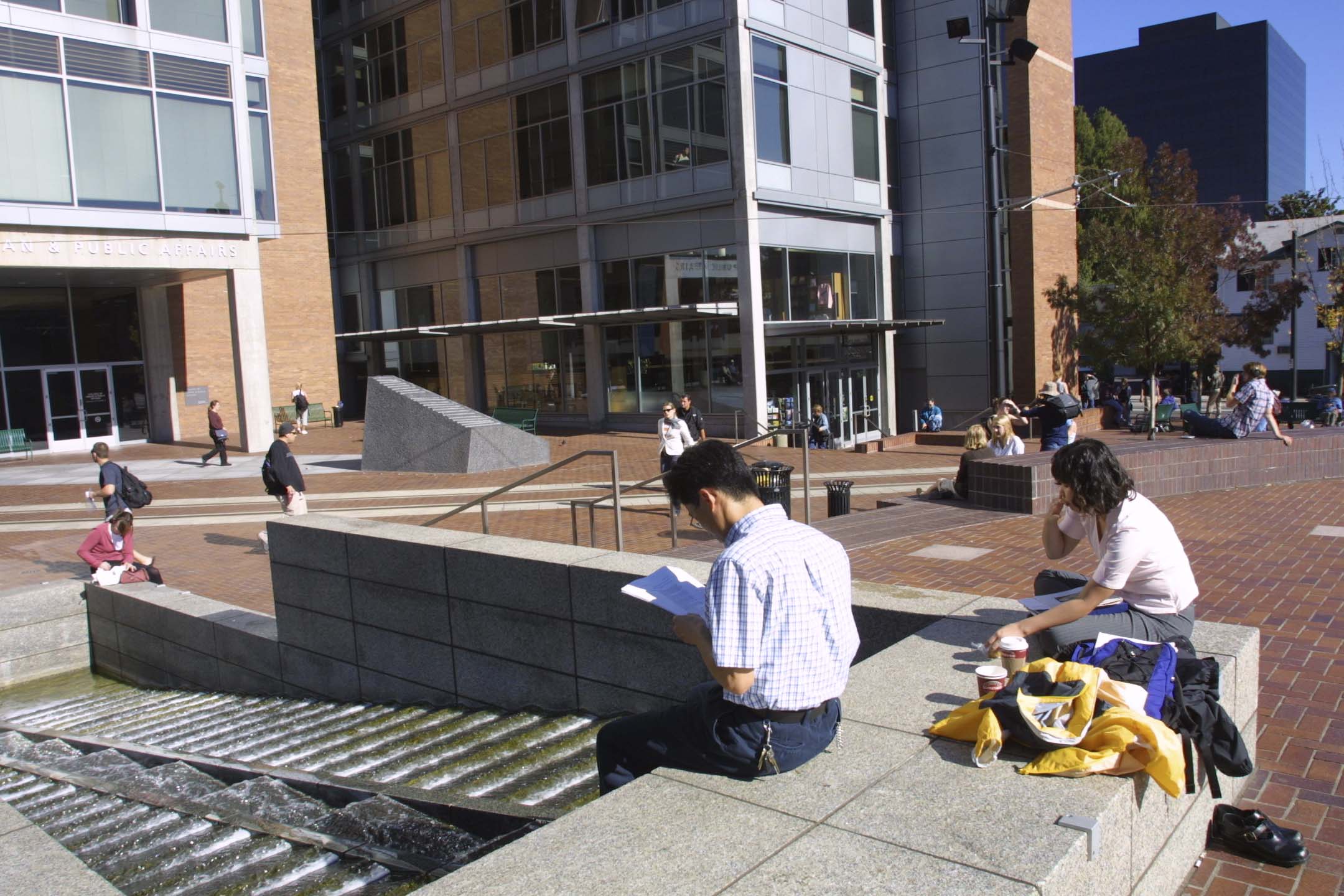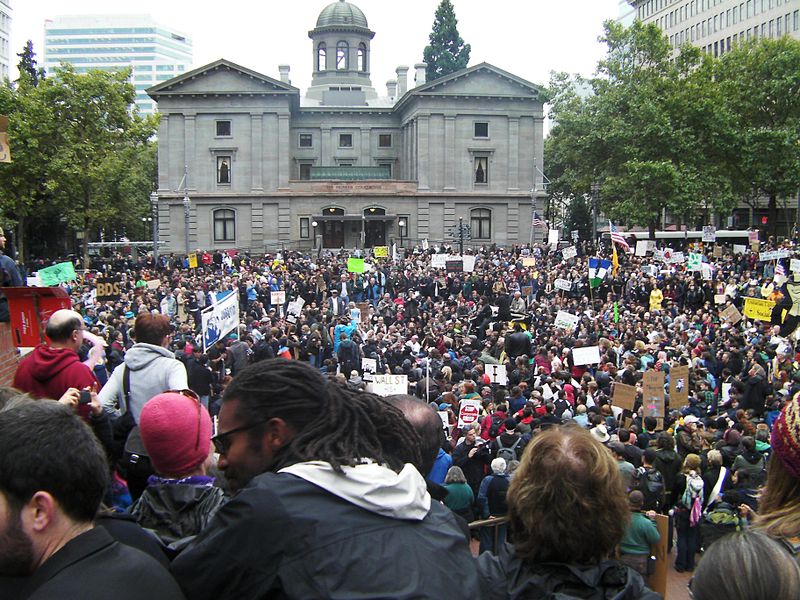The Future of Public Space
 Public space isn’t something typically on everyone’s mind on a daily basis, though of course it dictates much about how we live our lives – Where do you cross the street? Do you have sidewalks? Where’s your nearest public park or plaza? For those without private open space (apartment/condo dwellers, houseless individuals) public space is the only space they have to travel, walk their dog, have a picnic, or just plain experience the rest of their society (myself included). Considering that urban environments now contain over 50% of the world’s inhabitants, and that this is only going to increase, I believe that an emphasis on public space is necessary for the future of cities.
Public space isn’t something typically on everyone’s mind on a daily basis, though of course it dictates much about how we live our lives – Where do you cross the street? Do you have sidewalks? Where’s your nearest public park or plaza? For those without private open space (apartment/condo dwellers, houseless individuals) public space is the only space they have to travel, walk their dog, have a picnic, or just plain experience the rest of their society (myself included). Considering that urban environments now contain over 50% of the world’s inhabitants, and that this is only going to increase, I believe that an emphasis on public space is necessary for the future of cities.
Public Space and Protest
I am a public space aficionado, for lack of a better term. So much so, in fact, that I created an entire custom focus in my master’s program to support my ideal thesis work – a William H. Whyte influenced research project on a local plaza. However, in my second year at graduate school a far more important opportunity arose here in Portland, as in elsewhere, when the Occupy Wall Street movement set up camp in two downtown parks. Politics aside, I jumped (marched?) at the opportunity to take advantage of this potentially once in a lifetime situation. Direct observation of bottom-up processes of urban development demonstrating the right to the city in an urban public space? Yes, please!
As an anthropologist by trade I decided the best approach to gathering the most information at the camps would be to conduct a short ethnography of place. Due to the unexpectedness of the movement and encampment (and my already existing class schedule) I was unable to stay overnight. Instead, I visited the camps for 3-10 hours every day that I was able to (about 5 days per week) between October 22nd and November 12th. Aside from mingling and observing with the occupiers, I also volunteered at the Information Tent – basically the heart of the camps where one could ask questions, get directions, drop off donations, or request supplies. Here, I was also able to gather a sample of surveys from occupiers and non-occupiers alike, looking to get more information on why they were here, who they were, and how they were involved in the movement. In general, however, the interactions and observations at the camps were more enlightening than the surveys, which turned out to be very similar to other surveys conducted at the main Occupy Wall Street demonstrations.
It may not look like it to us (as it seldom does to the persons experiencing it) but culture is going through a rather dramatic shift, not just nationally but on a very global scale as well. And much like previous cultural shifts it is predominately being altered by our technological advancements. One of the most interesting things about the Occupy protests was the balance between technology and the physical occupation of space in real time. Much like in Tahrir Square, updates via social media allowed for a rapid response regarding marches and police actions; though the value was dependent upon more than just “likes” or digital signatures, but boots-on-the-ground (so to speak) in order to assert the movement’s agenda.
If the Occupy movement was simply an online petition, it wouldn’t have had nearly as much of an impact on awareness, not to mention individual lives. The intimate experience of personally meeting affected individuals of the recession and discussing the state of affairs in the United States, absolutely has a more lasting impression due to this connection. On the other hand, while I spent time physically in the company of these passionate individuals, I also spent a great deal of time watching live video streams from citizen journalists in New York City documenting arrests and march developments. I recall the sense of horror while I witnessed from helicopter feed dozens of tents filled with personal belongings being heaped unceremoniously into dumpsters at the Boston Occupation or the overwhelming thrill of victory when they took the Brooklyn Bridge chanting “Whose streets? Our streets!”. The "taking back" of public space in this movement was a critical component for visibility as well as demonstrating the democratic use of public space (for more on this, I suggest Marcuse's blog on the Right to the City).
Public Space and Technology
My thought process here lies in the fascinating dichotomy that we currently experience in our now-mostly-urban lives and how it relates to prior notions of public space. We are tied more than ever to our electronic devices while also spending more time walking and bicycling. Public life and the spaces that conduct it have become more important to us in recent years, not less, like the brutalism architecture of the 60s would have led us to believe. In what ways the combination of technology and the livable city will manifest is only beginning to surface though with interesting recent developments…
While some despair as usual for the future of a “disconnected” society reliant upon technology, we know that this is more of an overblown hyperbolic statement than anything. Texting will not, as has been claimed, destroy our use of proper grammar, nor will video games create a new generation of dirt-hating couch potatoes. However, there are some serious concerns, as Evgeny Morozov wrote in a recent piece at Slate about the new Google Maps (The Atlantic Cities also has a recap and thought experiment here.) Morozov describes the concept of missing public space as the customized maps focus instead on the destinations described in your social media and search criteria. “In Google's world, public space is just something that stands between your house and the well-reviewed restaurant that you are dying to get to. Since no one formally reviews public space or mentions it in their emails, it might as well disappear from Google's highly personalized maps.” (Then again, as someone who clearly mentions public space a lot, I wonder how Google Maps would alter my content?)
One of the contentious issues of public space has been the privatization of public space for a myriad of reasons. The very definition of public means that the public technically owns it and therefore can use it without rigid control and restrictions (within reason, of course). If it is private it can be altered and individuals and/or activities can be prohibited at the whim of the owner. According to most public space specialists these privately own public spaces (or POPS) are things to be feared if the Right to the City is to be upheld. Is the new Google Maps the future of public space as it is at least digitally conceived? Have we arrived at a point of worrying about privately owned digital representation of physical public space? (also known as PODRPPS? Hm. Maybe not…)
In another recent news story on this physical/technological dichotomy, Deeplocal, a private innovation/design studio in Pittsburgh, has taken this in a similar, but also very unique direction. Using a combination of crowdfunding in the form of a monthly fee and their own private resources, they’re outfitting an otherwise vacant grassy lot with salvaged furniture and amenities for the ultimate shared outdoor space. Rather than petitioning the city or independently moving to houses with larger yards for personal use (the suburbs, anyone?), the team has decided to take matters into their own hands and create the space that the neighborhood needs and that they themselves desire.
This of course does raise a few eyebrows for us public space people in the sense that with a privately owned semi-public space comes restrictions, as is also the case with this example via age limits, a cap on accepted members, email requirements, and that monthly fee. It’s a great idea – something I’d be tempted to create myself if I were in their situation – but can we truly call it public space? Definitely not. Could it be the future of “public” space in the physical sense? Quite possibly so. What with city budget cuts and the crowdsourcing craze, I’m sure the idea of a small member fee for such a neat outdoor space will take off in no time. What's more, the emerging culture is that of this maker mentality - not only stereotypically in places like Portland, but also Pittsburgh, and others, manifesting itself in ways like Deeplocal's team of "creatives". When compared to Google's approach, I think I would also prefer this kind of POPS – a somewhat more bottom-up approach that at least gives you the option of using a space you otherwise might not have, rather than altering your perception without your consent.
What does this mean for the future of public space?
It’s my opinion that the city of the future, as a whole, is going to be a fascinating hybrid of this physical/digital dichotomy we seem to be experiencing the beginnings of lately. More than just civic aps, objects like Google Glass are blurring the lines between the two realities while digitally printed three-dimensional physical objects are quickly entering the realm of everyday reality. This generation is driving less while also becoming more urban. New York City's recent launch of Citi Bike (a highly technical fleet of a human-powered and intimately interactive form of alternative transportation) has thus far been a huge success, and is only going to grow with other major cities in the U.S. jumping on the bike share boat this summer. While the research of Whyte on public spaces in the 70s was almost entirely concentrated on the physical aspects, the future of public space and urban life more generally will have to consider a more comprehensive look at what “reality” really is.



